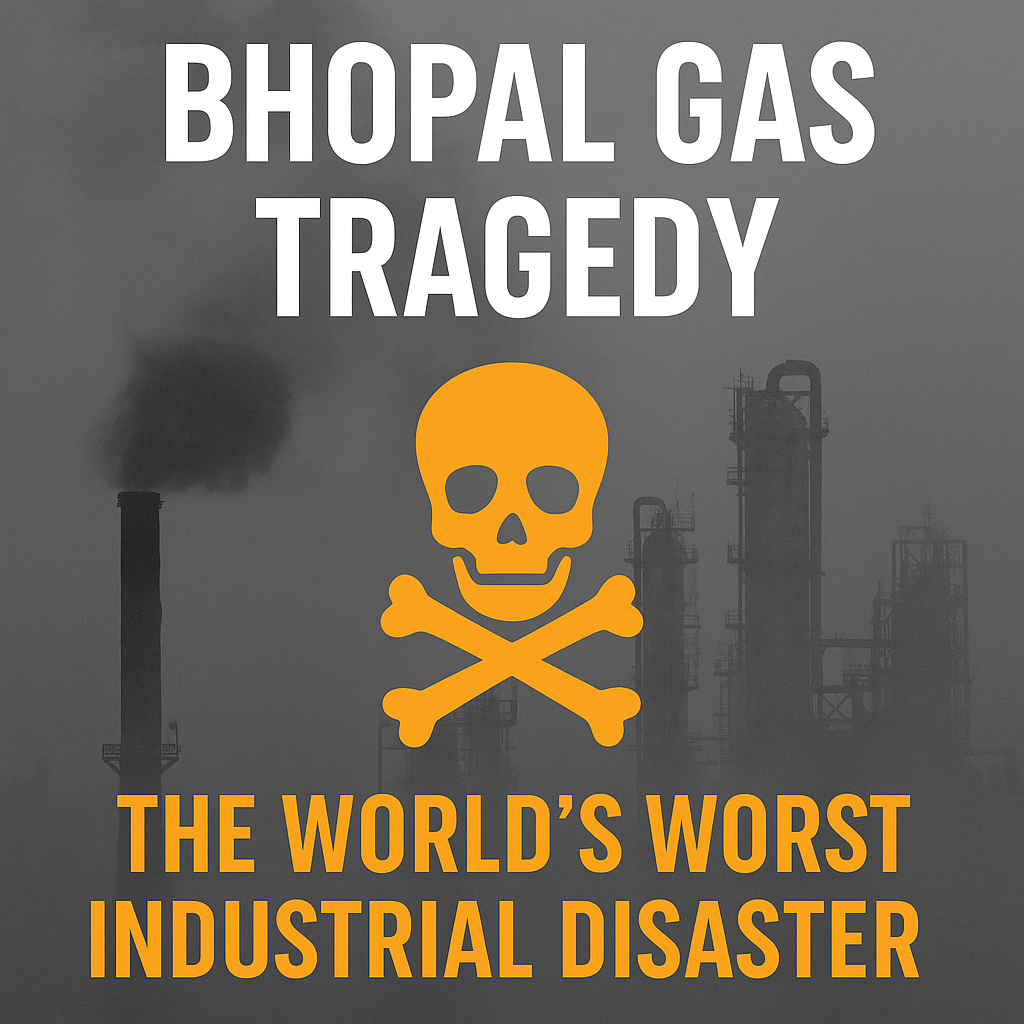Bhopal Gas Tragedy – The World's Worst Industrial Disaster
The Bhopal Gas Tragedy remains one of the most horrifying industrial disasters in history. It shocked the world with its suddenness and devastating effects on thousands of lives. Here’s everything you need to know about this tragedy:
📅Date & Location
- • The disaster occurred on December 2-3, 1984.
- • It took place at the Union Carbide India Limited (UCIL) pesticide plant in Bhopal, Madhya Pradesh, India.
⚠️What Happened?
- • A highly toxic gas called methyl isocyanate (MIC) leaked from the plant.
- • Around 40 tons of MIC gas escaped into the atmosphere during the night.
- • The gas spread rapidly across densely populated neighborhoods around the factory.
👷Workers and Residents Affected
- • About 2,000 workers were present at the plant during the leak.
- • Thousands of people were exposed to the toxic gas in nearby residential areas while they were sleeping.
☠️Death Toll & Injuries
- • Official immediate death toll: around 3,787 people.
- • Estimated total deaths over the years: 15,000 to 20,000.
- • Over 500,000 people were affected by the gas exposure.
- • Many survivors suffered chronic health problems like respiratory diseases, blindness, and birth defects.
🔍Causes of the Disaster
- • Poor maintenance and safety measures at the plant.
- • Inadequate safety systems to detect and control gas leaks.
- • Failure of cooling systems that could have reduced the gas reaction.
- • Human errors and cost-cutting led to compromised safety.
- • Lack of proper emergency response planning and communication.
🌍Consequences
- • Long-term health issues for survivors and their descendants.
- • Environmental contamination of soil and water near the plant.
- • Massive social and economic impact on Bhopal’s population.
- • Legal battles and compensation struggles for victims that lasted decades.
- • Global awareness about industrial safety and disaster management increased.
🛡️Precautions Taken After the Tragedy
- • Stricter industrial safety regulations introduced in India.
- • Improved disaster management and emergency response protocols.
- • The Environment Protection Act, 1986 was enacted.
- • Monitoring of hazardous industries became mandatory.
- • Union Carbide’s liability and responsibility were debated and redefined in law.
- • Greater emphasis on corporate social responsibility (CSR) and community safety.
💡Lessons Learned
- • The tragedy showed how negligence and poor safety standards can lead to catastrophic outcomes.
- • It highlighted the need for transparency, accountability, and preparedness in industries handling hazardous materials.
- • Community awareness and participation in safety planning became crucial.
- • It remains a warning to governments and companies worldwide about the importance of industrial safety.
The Bhopal Gas Tragedy is a somber chapter in history, reminding us that economic growth should never come at the cost of human lives and the environment. Constant vigilance and strict safety measures are essential to prevent such disasters in the future.
